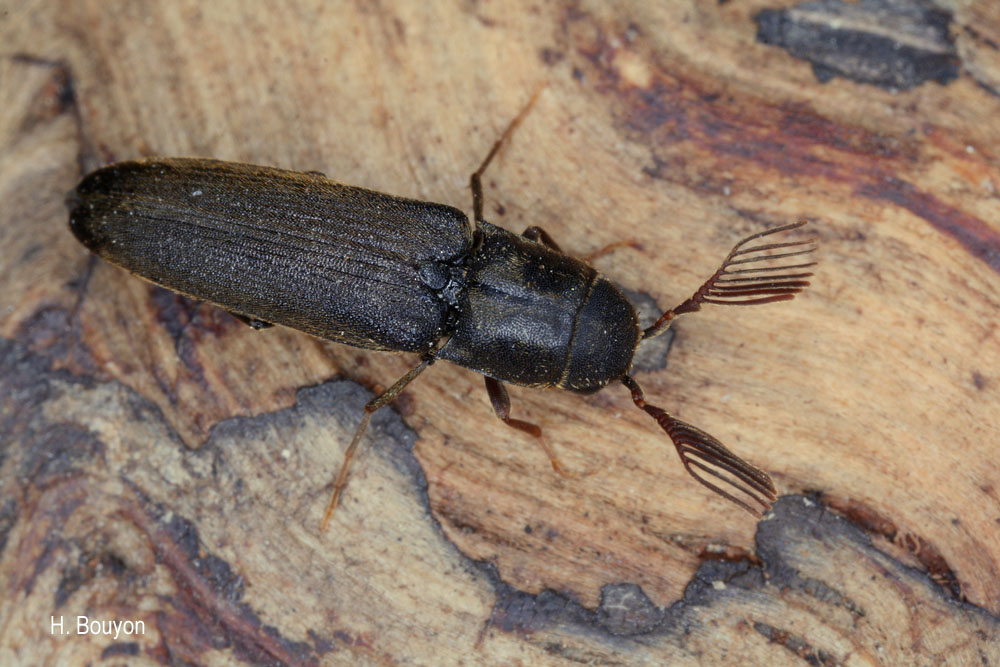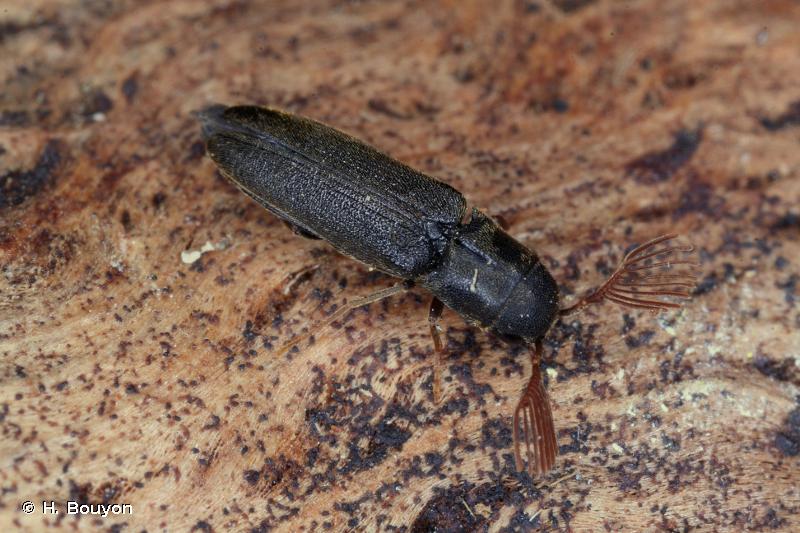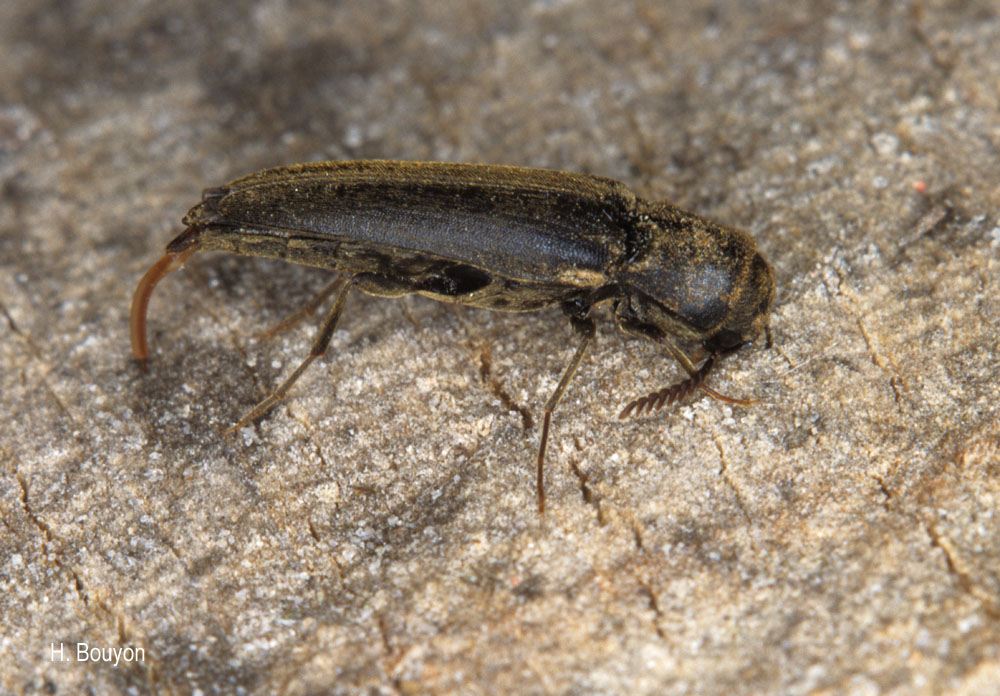
cd_nom

| Author : H.Bouyon |
 |
To get the picture, please visit:
Bouyon Hervé
herve.bouyon@wanadoo.fr
Any reuse of one or more photographs on this site is subject to an authorization request from the author.
Link to the Code of Intellectual Property (Legifrance)

| Author : H. Bouyon |
 |
To get the picture, please visit:
Any reuse of one or more photographs on this site is subject to an authorization request from the author.
Link to the Code of Intellectual Property (Legifrance)

| Author : H.Bouyon |
 |
To get the picture, please visit:
Bouyon Hervé
herve.bouyon@wanadoo.fr
Any reuse of one or more photographs on this site is subject to an authorization request from the author.
Link to the Code of Intellectual Property (Legifrance)
Taille : 8-11mm
Diagnose :
Corps très allongé, atténué en arrière, convexe, peu brillant, variant du brun-noir au brun-orangé avec la tête et le pronotum noirs. La pubescence dorée, fine et courte est bien visible. Les antennes, courtes, n'atteignent pas le bord postérieur du pronotum. Chez la femelle, elles sont dentées à partir du 4e article, longuement pectinées chez le mâle. Le pronotum est transverse, à ponctuation forte et dense, convexe avec les pointes postérieures courtes dépourvues de carène. La carène latérale du pronotum est entière. Le scutellum est court, arrondi.
Identification : Très difficile.
Confusions possibles :
I. marmottani est plus petit avec la ponctuation pronotale plus forte. I. nigriceps est plus petit avec le scutellum en ovale allongé.
Périodes d'observation (adultes) : Mai à juillet.
Biologie-éthologie :
La larve se développe dans le bois carié de divers feuillus, fréquemment sur Carpinus, Fagus. Les adultes se rencontrent sur les branches mortes et les arbres morts des forêts de feuillus.
Biogéographie-écologie :
Forêts feuillues d'Europe centrale et orientale.
Références :
Lohse G.A., 1967 : Sternoxia : Eucnemidae. In Freude H., Harde K.W. & Lohse G.A., Die Käfer Mitteleuropas. Band 6. Krefeld, Goecke & Evers: 187-201.
Hervé Bouyon(ACOREP-France),2020
Continental
Metropolitan France
Overseas
Marine
Metropolitan France
Overseas
The map presents a summary at the 10 x 10 km grid of the observation data for the species transmitted to the SINP. These data have been subjected to validation filters.
The map presents a reference distribution layer of the species at the scale of departments and marine sectors. The presence and absence data were established by expertise within a network of partners. This reference distribution is used in the validation process of the SINP data at the INPN level.
Corresponds to a report on the basis of at least one observation proved within a period of 10 years (20 years for little-known invertebrates) preceding the year and no presumption of extinction since obtaining the last data nor doubt on reproductive and implemented nature of this population. For migratory species, the presence indicated concerns areas of reproduction.
This status is based on one or more of the following criteria:
This point covers the absence, more difficult by nature to demonstrate than presence. This status is based on one or more of the following criteria:
This status must be assigned to a department in which the presence of the species is casual.
Particular case of absence due to a proven extinction less than a half century ago (older disappearances are treated as "no probable or definite").
In the state of knowledge, we can not comment on the presence or absence in the current department. This is the default status when not comprised in one of the previous categories or whenever there is doubt.
The map shows the global distribution of the species based on GBIF data (Global Biodiversity Information Facility).
